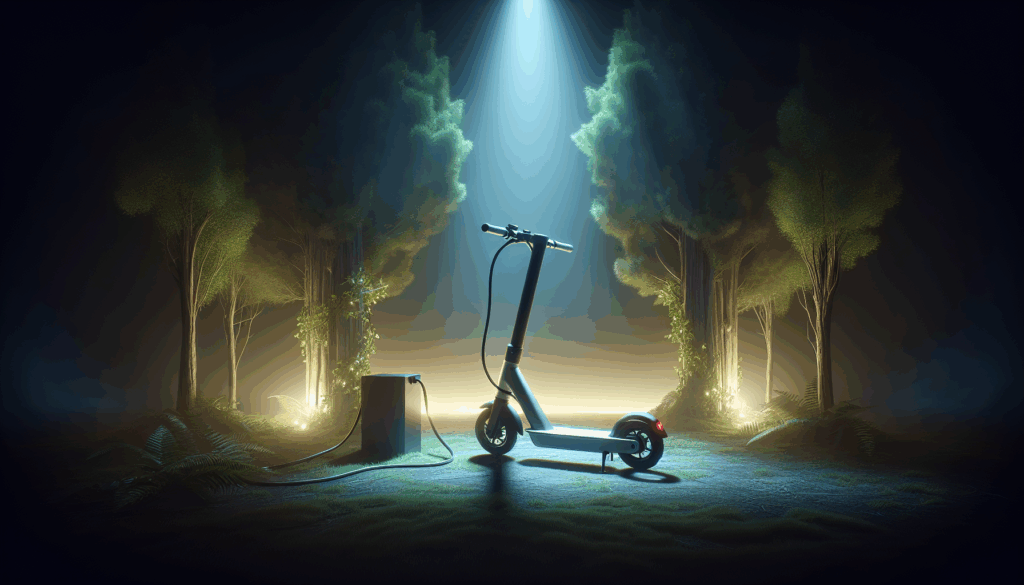
When it comes to electric scooters, the performance, distance, and pricing can heavily depend on the technical specifications like voltage and amp-hours (Ah). Understanding these key factors not only helps you choose the right electric scooter but also affects how far you can travel on a single charge and what you can expect to pay for your scooter. A higher voltage typically means more power and potentially greater speed, while amp-hours determine the battery’s capacity and ultimately the range of your ride. In this blog post, we’ll delve into how these two factors influence electric scooter performance and pricing, providing you with valuable insights to make an informed decision for your next electric scooter purchase.
The Basics of Electric Scooter Voltage and Ah
When it comes to electric scooters, understanding the concepts of voltage (V) and ampere-hours (Ah) is crucial for evaluating their performance and range. Voltage essentially denotes the electrical potential difference, which can directly influence the scooter’s maximum speed and efficiency. For instance, the OEM Xiaomi Escooter operates on a 36V system, while the more robust YUME models, like the S10 and Swift, utilize a power-packed 48V setup. This disparity allows the YUME scooters to reach speeds of up to 50KM/h, significantly enhancing their performance for users looking for a thrilling ride.
Additionally, the ampere-hours capacity of the battery plays a pivotal role in determining how long the electric scooter can travel on a single charge. In our examples, the Xiaomi Escooter features a 6Ah battery, providing a range of 25-35km, whereas the Eko Life eDegree CS1 with an 8Ah battery boasts a range of up to 35km. The YUME S10 and Swift, equipped with 21Ah batteries, extend range capabilities to 40-60km. This higher capacity translates to higher prices, as seen in the price disparity between models, where features like increased voltage and Ah directly correlate to enhanced performance and greater overall value for the rider.
How Voltage Impacts Speed and Performance
Voltage is a crucial factor that significantly influences the speed and performance of an electric scooter. Electric scooters operate on batteries, and a higher voltage typically means that more power can be delivered to the motor, ultimately resulting in higher speeds.
For instance, the OEM Xiaomi Escooter operates at a 36V system, allowing it a maximum speed of 30KM/h. In contrast, scooters like the YUME S10 and YUME Swift, with a voltage of 48V, can reach speeds of 50KM/h due to the increased power output, demonstrating how voltage directly correlates to performance capabilities. Higher voltage systems not only provide enhanced speed but also ensure a more responsive ride, especially on inclines or during sharp accelerations, making them a preferred choice for many riders seeking thrill and efficiency.
The impact of voltage on performance also reflects in the pricing of electric scooters. Typically, those with higher voltage systems, such as the YUME scooters, tend to be priced higher due to their advanced features, robust construction, and superior performance metrics. For instance, the YUME Swift is priced at RM 4,288 reflecting its 48V motor and additional smart features, while the more basic OEM Xiaomi Escooter is priced at RM 1,188, with a lower voltage and speed capability. Understanding how voltage contributes to both the performance and price of electric scooters helps consumers make informed choices in selecting the model that best suits their riding needs and budget.
The Role of Amp Hours (Ah) in Electric Scooter Range
Amp hours (Ah) play a crucial role in determining the distance an electric scooter can cover on a single charge. Essentially, a higher Ah rating indicates more energy storage capacity within the battery. For example, the Eko Life eDegree CS1, with its 36V 8Ah battery, has a range of up to 35 km, while the OEM Xiaomi Escooter, equipped with a 36V 6Ah battery, offers a range of 25-35 km. This difference is significant because it highlights how the battery’s amperage directly influences the scooter’s distance capabilities. Thus, when choosing an electric scooter, considering the Ah rating is essential for ensuring it meets your travel needs and routines.
Furthermore, the value of electric scooters tends to increase with a higher Ah rating, as it corresponds to better performance and extended range. For instance, scooters like the YUME S10 and YUME Swift both feature larger batteries with higher Ah ratings (48V 21Ah), providing ranges of 40-50 km and up to 60 km, respectively. Consequently, this expanded range justifies the higher price tags, with models like the YUME Swift retailing at RM 4,288. As potential buyers evaluate their options, understanding the role of Ah in performance and pricing can lead to a more informed decision for a reliable and suitable electric scooter.
Comparative Analysis of Popular Electric Scooters
When considering the distance an electric scooter can travel, both voltage and amp hours (Ah) play critical roles. For instance, the OEM Xiaomi Escooter features a battery with 36V and 6AH, offering a range of 25-35 km, making it ideal for short commutes. In contrast, the Eko Life eDegree CS1, equipped with a 36V 8AH battery, enhances its range to 35 km. The increased amp hour capacity allows the scooter to draw more energy over a longer period, translating to more extended travel capabilities. This difference in battery specifications is one reason the Eko Life eDegree is priced higher at RM 1,588 compared to the OEM Xiaomi Escooter at RM 1,188.
Higher Ah ratings typically signify better performance and improved price points in many electric scooters. In the higher-tier models, such as the YUME S10 and YUME Swift, a marked increase in both voltage and Ah allows for extended ranges and higher speeds. The YUME S10 features a robust 48V 21AH battery, providing a range of 40-50 km, and boasts a maximum speed of 50 KM/h, priced at RM 2,999. On the other hand, the YUME Swift, also utilising a 48V 21AH configuration, ups the ante with smart features and a longer range of 60 km, but comes with a price tag of RM 4,288.
This comparative analysis highlights how a scooter’s voltage and Ah ratings not only influence performance metrics like distance but also directly impact the pricing of electric scooters.

Price Correlation: Why Higher Voltage and Ah Models Cost More
When considering electric scooters, the battery voltage and amp-hour (Ah) ratings are crucial factors that directly influence not just the range but also the pricing of these models. Higher voltage often translates to increased power output, enabling greater speeds and efficiency, while a higher Ah rating indicates a larger capacity to store energy. For instance, scooters like the YUME Swift, with a robust 48V 21AH battery, can reach speeds of up to 50KM/h and cover distances of 60km. This technical prowess naturally leads to a higher price point of RM 4,288 compared to more basic models like the OEM Xiaomi Escooter, which, with its 36V 6AH battery, sells for RM 1,188 but offers a limited range and speed.
This clear relationship exhibits how features such as battery capacity and voltage directly impact the performance and, consequently, the cost of electric scooters. Moreover, while some may opt for lower-cost models to save upfront, investing in a scooter with higher voltage and Ah can yield greater long-term benefits such as extended distance and reduced charging frequency. The Eko Life eDegree CS1, priced at RM 1,588, has a middle ground of 36V 8AH and boasts a 35km range, showcasing that upgrades in battery specifications lead to enhancements in performance. Hence, understanding this price correlation helps consumers make informed decisions tailored to their riding needs and budget capabilities.
Evaluating Battery Life and Longevity in Electric Scooters
When evaluating the battery life and longevity of electric scooters, two critical specifications come into play: voltage (V) and amp-hour (Ah) capacity. For instance, the OEM Xiaomi Escooter features a 36V 6Ah battery which provides a range of 25-35 kilometers. In contrast, the Eko Life eDegree CS1 boasts a more robust 36V 8Ah battery, extending its range to approximately 35 kilometers. The increased amp-hour capacity allows for longer rides per charge, illustrating how these specifications are significant when it comes to selecting the right electric scooter for your commuting needs. Higher voltage and amp-hour combinations ultimately translate to better overall battery performance and longevity, thus influencing user satisfaction and the value for money spent on the scooter.
As we delve deeper into the premium electric scooters, such as the YUME S10 and YUME Swift, we see noteworthy differences in their battery configurations. Both models are equipped with 48V systems along with higher amp-hour capacities, enabling ranges between 40-60 kilometers. This increased power and efficiency comes at a price, with the YUME S10 priced at RM 2,999 and the YUME Swift at RM 4,288, clearly reflecting that higher specifications can lead to a higher investment. Thus, understanding the interplay between voltage, amp-hour ratings, and range is essential for making informed decisions regarding your electric scooter purchase.
Choosing the Right Electric Scooter: Balancing Performance and Budget
When selecting the right electric scooter, it’s essential to balance performance and budget, particularly focusing on key specifications like voltage and amp hours (Ah). A higher voltage often translates to a more powerful scooter, capable of achieving greater speeds and covering longer distances. For instance, the YUME Swift Electric Scooter, with its 48V 1200W motor, can reach speeds of up to 50KM/h and boasts a range of 60km, thanks to its robust power supply. This high performance does come with a price tag of RM 4,288, demonstrating how increased battery capacity and voltage contribute to superior performance but can also lead to a higher initial investment.
Conversely, more budget-friendly options like the OEM Xiaomi Escooter offer a lower battery capacity at 36V with a range of 25-35km, priced at RM 1,188. While this scooter is economical, it may not meet the needs of riders looking for extended travel capabilities or faster speeds. Thus, understanding the relationship between voltage, amp hours, and overall electric scooter performance is crucial for making an informed decision that aligns with both your budget and riding requirements.

Final Thoughts on Voltage and Ah in Electric Scooters
In summary, understanding the relationship between voltage and amp-hour (Ah) ratings is crucial for anyone in the market for an electric scooter. The voltage primarily determines the maximum speed a scooter can achieve, while the amp-hour rating directly influences the distance the scooter can travel on a single charge. As we examined with various models, higher voltage and Ah ratings typically come with a higher price tag due to advanced technology and enhanced performance. For instance, the YUME S10 and YUME Swift, despite being pricier models, offer exceptional ranges and speeds, making them worthwhile investments for those who prioritize performance.
Moreover, while smaller electric scooters like the OEM Xiaomi Escooter and Eko Life eDegree CS1 may be more budget-friendly and suitable for casual users, they provide limited range and speed compared to the higher-end models. The decision ultimately depends on your commuting needs, budget, and the importance of distance and speed in your daily travels. By carefully considering these factors, you can make an informed choice that best suits your preferences, ensuring your electric scooter is a reliable companion on your journeys.
